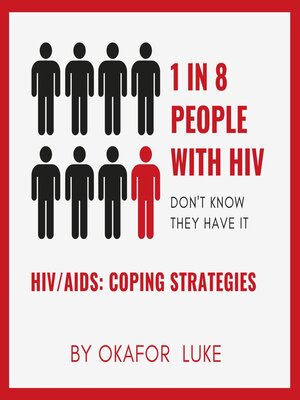HIV/AIDS
ebook ∣ Coping Strategies · Creating Appropriate Awareness on Diseases and Fitness-Related Topics
By LUKE OKAFOR

Sign up to save your library
With an OverDrive account, you can save your favorite libraries for at-a-glance information about availability. Find out more about OverDrive accounts.
Find this title in Libby, the library reading app by OverDrive.



Search for a digital library with this title
Title found at these libraries:
| Library Name | Distance |
|---|---|
| Loading... |
Human Immunodeficiency Virus (HIV) that results to Acquired Immunodeficiency Syndrome (AIDS) represents the most significant global health challenges of today. HIV weakens the immune system, making individuals vulnerable to various opportunistic infections and eventually AIDS if untreated.
The emergence of HIV/AIDS in the late 20th century marked a turning point in global public health concern. The origin of the virus, its early impact and the subsequent efforts to understand and manage the epidemic form crucial part of its history.
Examining the prevalence and distribution of HIV/AIDS worldwide sets the stage for understanding its impact on different regions, communities and demographics. Global efforts to address the epidemic varies, reflecting the complex nature of the disease.
Understanding the modes of transmission, including sexual contact, blood exposure and mother-to-child transmission is fundamental to HIV prevention. Examining the factors influencing transmission rates sheds light on the dynamics of the epidemic. A deep dive into the structure of the virus and its replication process at the molecular level is essential for comprehending the challenges in developing effective treatments and vaccines.
Early stages of infection are often asymptomatic, making timely diagnosis challenging. Recognizing the symptoms and understanding the concept of the window period is crucial for effective testing. The lack of noticeable symptoms does not equate to non-infectivity. Individuals in this stage can still transmit the virus, highlighting the importance of continuous preventive measures.
As the virus progresses, opportunistic infections become prevalent, and the immune system weakens. Identifying and treating AIDS-defining illnesses is critical for managing advanced HIV. Understanding the critical thresholds of CD4 counts and the spectrum of AIDS-related illnesses provides insights into the gravity of the disease and the urgency of intervention.
Different testing methods, from traditional antibody tests to nucleic acid tests, play crucial roles in diagnosis. Each method has its strengths and limitations, influencing the accuracy of results. The significance of early detection cannot be overstated. Early diagnosis not only improves treatment outcomes but also plays pivotal role in preventing further transmission. Barriers to testing, including stigma, access to healthcare and the accuracy of tests during the window period, pose challenges that need to be addressed to enhance global testing initiatives.
The cornerstone of HIV/AIDS treatment, Antiretroviral Therapy (ART) suppresses the viral load, preserves immune function and improves overall health. Understanding how ART works and the importance of adherence is essential for successful long-term management. The emergence of drug resistance, particularly in resource-limited settings and the ongoing struggle for universal access to treatment, present challenges in the global fight against HIV/AIDS.
Educational initiatives focusing on safe sex practices, harm reduction for drug abusers and destigmatizing HIV, contribute to behavioral prevention efforts. The advent of Pre-Exposure Prophylaxis (PrEP) underscores the importance of biomedical interventions in preventing HIV transmission. Ensuring access to antiretroviral drugs during pregnancy and implementing safe delivery practices are crucial steps in preventing mother-to-child transmission.
The psychological and social impacts of stigma on individuals living with HIV/AIDS and the broader implications for public health interventions need to be examined. It is crucial to analyze the economic costs associated with...







